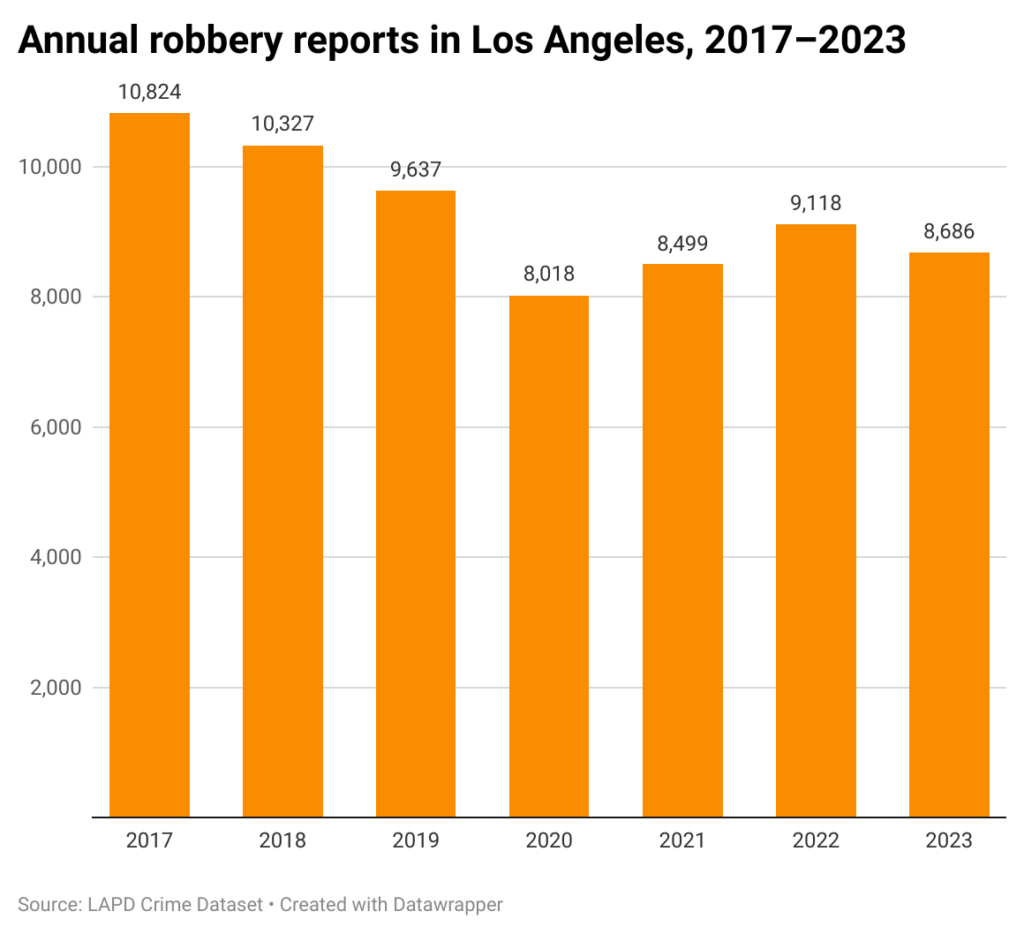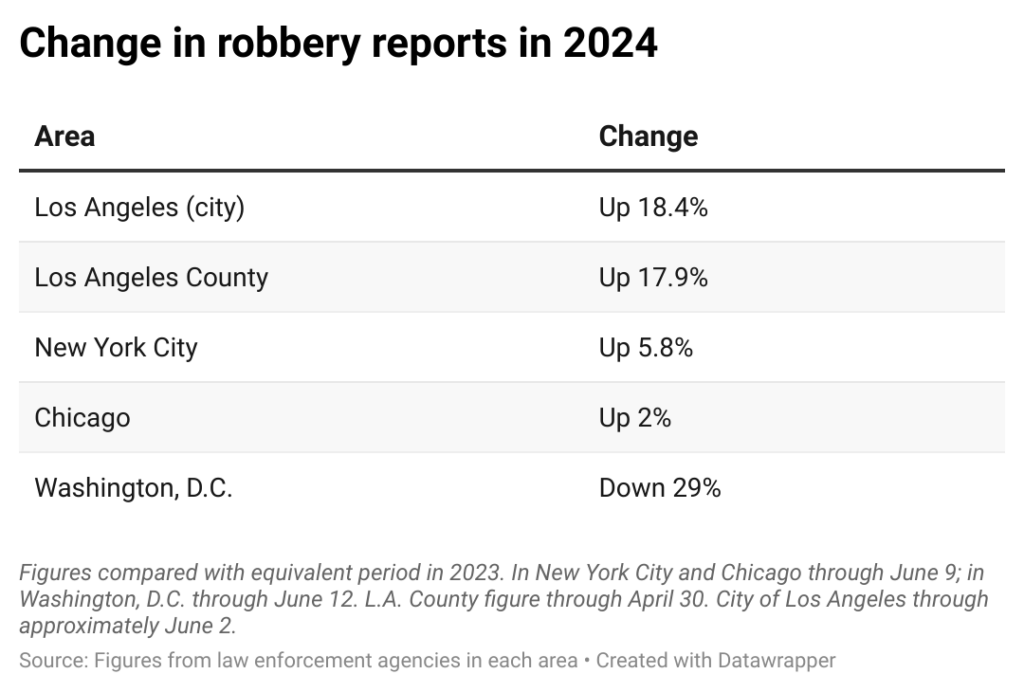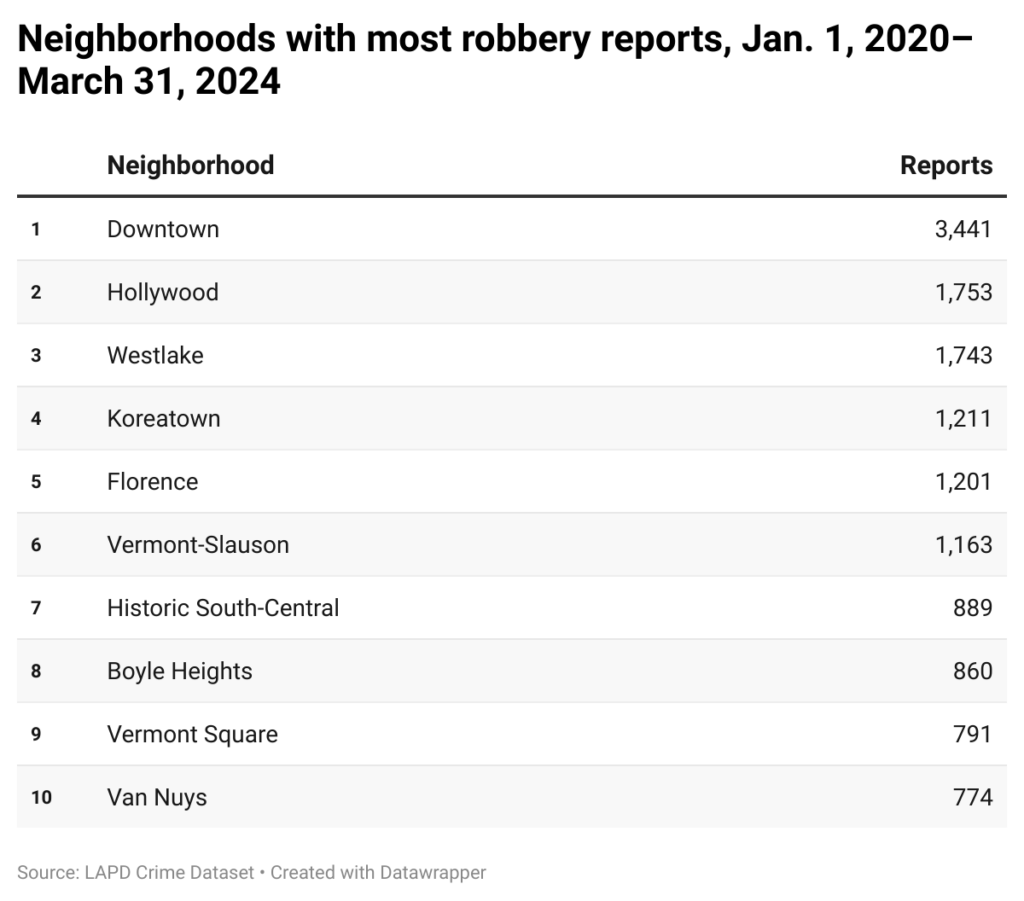Robberies up 18% this year in Los Angeles

The United States this year is experiencing a significant drop in robberies. The reverse is happening in Los Angeles.
The FBI recently released its Quarterly Uniform Crime Report, a tabulation of reports from law enforcement organizations across the country. The data, which the FBI noted is preliminary, found that from January through March, robbery decreased nationwide by 17.8%.
Crosstown previously reported that in the first two months of 2024, robberies rose by 13.9% compared with the same period in 2023. The situation has since worsened.
At the June 11 meeting of the Los Angeles Police Commission, Interim Los Angeles Police Department Chief Dominic Choi said that in approximately the first five months of 2024, “We’re up 18.4%, or plus-640 robberies, compared with 2023.”
The rise has been seen countywide. Data from the Los Angeles Sheriff’s Department shows 1,411 robberies from January through April (May figures are not yet available). That is up 17.9% from the same period last year.
[Get crime, housing and other stats about where you live with the Crosstown Neighborhood Newsletter]
While the current numbers raise concern, they are in line with the count two years ago. Choi said that year-to-date the LAPD has fielded 28 fewer robberies than during the same time in 2022. That is a .7% decline.
Robberies are also below historic highs. In the full year of 2017, there were approximately 10,800 robbery reports in the city of Los Angeles. Figures have since fallen, and the count last year was 8,686, according to publicly available LAPD data.

National comparisons
Robbery trends in big cities across the country are not uniform. Reports in New York City are up 5.8% through June 9, compared with the same period last year, according to Compstat data. In Chicago, Compstat data shows a 2% increase in robberies (again through June 9).
In Washington, D.C., robbery reports (through June 12) are down 29%, compared with the same time frame in 2023.

Another point of concern in Los Angeles is robberies involving firearms. According to Choi, they are up 7.1% in 2024 compared with last year. Incidents with a gun now account for 25.1% of all robberies, he stated.
He added that in this case the situation is much improved from two years ago.
“Compared with 2022, robberies with firearms are down 25.8%, or minus 359 robberies in 2024,” he told the Police Commission.
Historically, the greatest concentration of robberies occur in outdoor locations, often on streets. That is the case this year. At the previous week’s Police Commission meeting, on June 4, Choi said 1,638 robbery reports were “in the street or parkway.”
An unsettling trend this year is the number of small businesses that are being victimized.
“Restaurants, mini-marts, clothing stores, liquor stores, markets,” Choi said on June 4, “those types of locations account for 894 robberies. They’re up 43.6% year to date, or plus-365 compared with 2023.”
The LAPD in March began instituting a new records management system, and currently it is difficult to determine which communities experience the most robberies. But in the past, densely inhabited neighborhoods recorded the most incidents.
In the period from Jan. 1, 2020 through March 1, 2024, Downtown recorded 3,441 robberies, according to LAPD data. That is nearly twice the total of the second-highest community, Hollywood, where there were 1,753 reports. There were 1,743 reports in Westlake.

How we did it: We examined publicly available crime data from the Los Angeles Police Department from Jan. 1, 2017–June 2, 2024. Learn more about our data here.
LAPD data only reflects crimes that are reported to the department, not how many crimes actually occurred. In making our calculations, we rely on the data the LAPD makes publicly available. LAPD may update past crime reports with new information, or recategorize past reports. Those revised reports do not always automatically become part of the public database.
Have questions about our data or want to know more? Write to us at askus@xtown.la.






